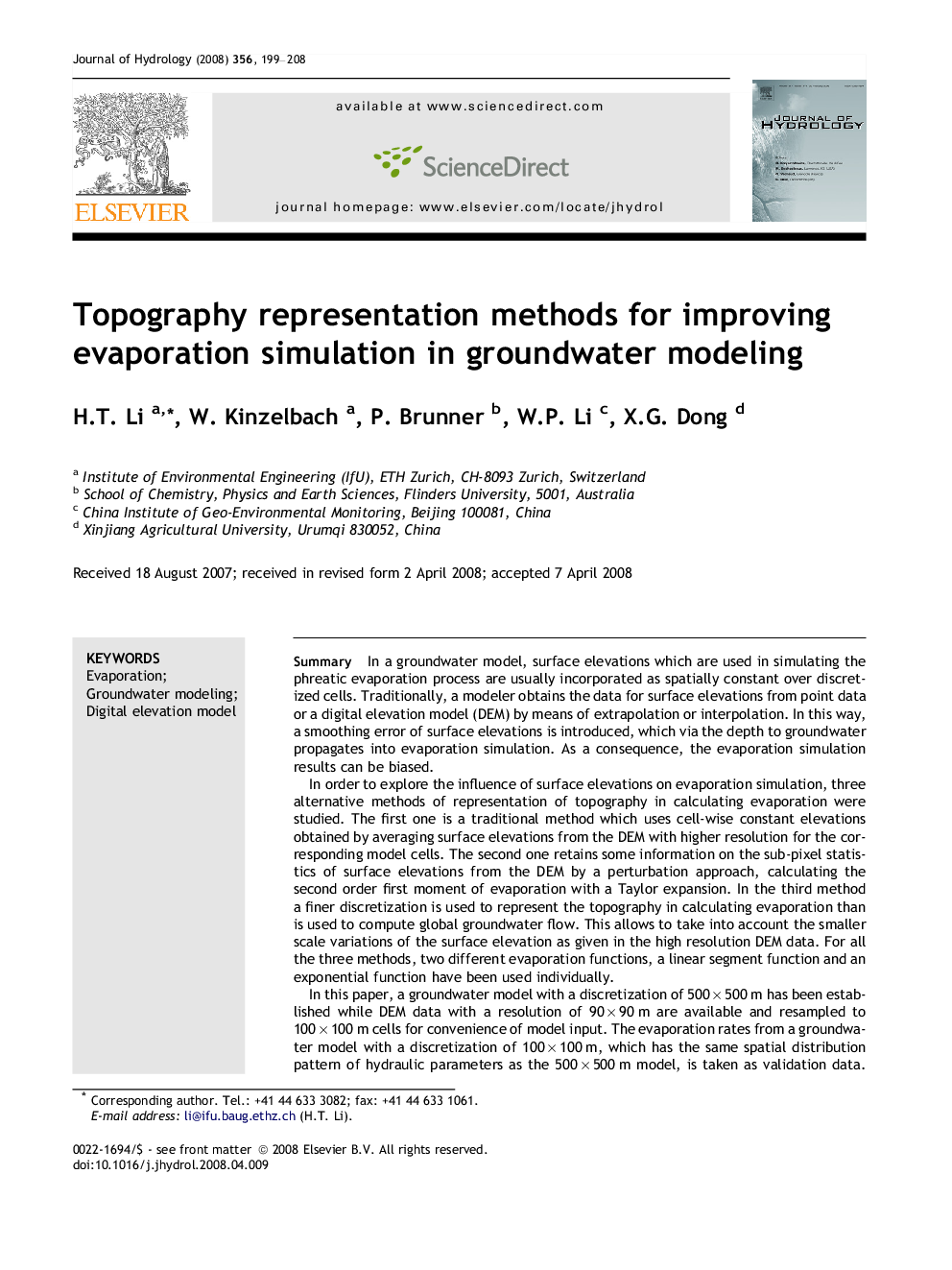| کد مقاله | کد نشریه | سال انتشار | مقاله انگلیسی | نسخه تمام متن |
|---|---|---|---|---|
| 4579459 | 1630106 | 2008 | 10 صفحه PDF | دانلود رایگان |

SummaryIn a groundwater model, surface elevations which are used in simulating the phreatic evaporation process are usually incorporated as spatially constant over discretized cells. Traditionally, a modeler obtains the data for surface elevations from point data or a digital elevation model (DEM) by means of extrapolation or interpolation. In this way, a smoothing error of surface elevations is introduced, which via the depth to groundwater propagates into evaporation simulation. As a consequence, the evaporation simulation results can be biased.In order to explore the influence of surface elevations on evaporation simulation, three alternative methods of representation of topography in calculating evaporation were studied. The first one is a traditional method which uses cell-wise constant elevations obtained by averaging surface elevations from the DEM with higher resolution for the corresponding model cells. The second one retains some information on the sub-pixel statistics of surface elevations from the DEM by a perturbation approach, calculating the second order first moment of evaporation with a Taylor expansion. In the third method a finer discretization is used to represent the topography in calculating evaporation than is used to compute global groundwater flow. This allows to take into account the smaller scale variations of the surface elevation as given in the high resolution DEM data. For all the three methods, two different evaporation functions, a linear segment function and an exponential function have been used individually.In this paper, a groundwater model with a discretization of 500 × 500 m has been established while DEM data with a resolution of 90 × 90 m are available and resampled to 100 × 100 m cells for convenience of model input. The evaporation rates from a groundwater model with a discretization of 100 × 100 m, which has the same spatial distribution pattern of hydraulic parameters as the 500 × 500 m model, is taken as validation data. The comparisons of evaporation rates were carried out on different averaging scales ranging from 500 m to 2 km. The compared evaporation rates for each scale are obtained by summing up the corresponding evaporation rates from the 500 × 500 m model and the 100 × 100 m model. It is shown that the third method, which uses a finer resolution of topography in the evaporation calculation, yields the best results no matter which evaporation function is used. It is also seen that the correlation between the evaporation rates from the 500 × 500 m model and the 100 × 100 m model increases and values converge when comparing the evaporation results on an increasingly coarser scale, independently of the selected method and evaporation function.
Journal: Journal of Hydrology - Volume 356, Issues 1–2, 1 July 2008, Pages 199–208